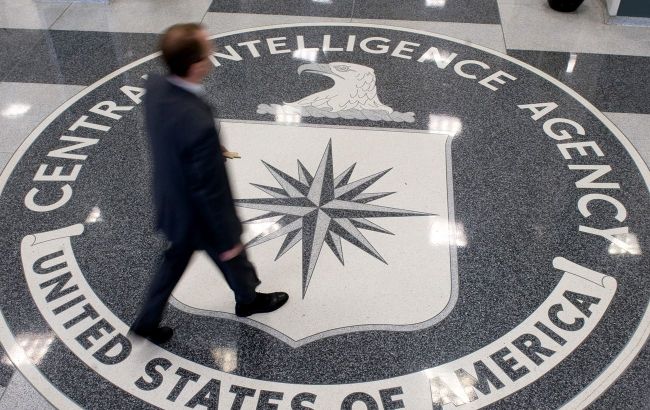Top CIA analyst on Russia removed under Trump
 Headquarters of the US Central Intelligence Agency (Photo: Getty Images)
Headquarters of the US Central Intelligence Agency (Photo: Getty Images)
The US intelligence community has dismissed a senior CIA analyst who prepared a report on Russian interference in the 2016 US elections, signaling an escalation in tensions between the White House and American intelligence, reports The Economist.
According to The Economist, the CIA officer had served in US intelligence for over 20 years. In 2016, as a lead officer on Russia and Eurasia, she oversaw the preparation of the report detailing Russia’s interference in the presidential election in favor of Donald Trump.
Several years later, she returned to the agency as a senior manager, overseeing operations and analytical work at the CIA related to Russia and the former Soviet Union.
However, on August 19, 2025, US Director of National Intelligence Tulsi Gabbard revoked the security clearance of the CIA officer in question, along with 36 other current and former officials, citing allegations of betrayal of the Constitutional oath.
The Economist notes that the Trump administration previously used control over security clearances as a political tool against former officials. The CIA officer, along with Shelby Pierson and Vinh Nguyen, who were also involved in the 2016 report, became some of the highest-ranking career intelligence officers dismissed under Trump’s presidency.
According to The Economist, these moves reflect a deepening confrontation between the administration and the US intelligence community.
End of a career
The Economist notes that the removal of the CIA officer, who managed hundreds of analysts and other personnel, has alarmed many current and former intelligence officials.
Former CIA officer Larry Pfeiffer, whose clearance was revoked on January 20 of this year, said that losing access to classified information is the end of a career.
“Even the cleaning crews have clearance. Many officers also rely on security clearances after retirement to seek consulting positions. The cia officer was thought to be close to retirement age,” he noted.
Another source told the Economist that it is one thing to tell the truth to those in power in an abstract sense, and quite another when your career and your family’s well-being are on the line.
“Who will want to work on some controversial issue or go out on a limb analytically?” the insider added.
Unprecedented level of retaliation
The Economist recalled that in April, US Deputy Director of National Intelligence Tulsi Gabbard pressured analysts to revise an assessment of the Venezuelan criminal organization Tren de Aragua to align with Trump’s policy. In June, the president himself criticized intelligence leaks from the Defense Intelligence Agency that contradicted his claims about the destruction of Iranian nuclear facilities.
The Economist noted that the CIA has a long history of delivering unwelcome news to US presidents. Analytical disagreements with the head of state during the Vietnam War in the 1960s and the Iraq War in the 2000s led to numerous conflicts between the agency’s central office in Langley and the White House.
However, The Economist writes that the current level of retaliation is unprecedented. “It is hard to overstate the impact on morale. Everyone is so afraid and looking over their shoulder, asking am I next?” said a former colleague of one CIA officer.
Many of the 37 officials affected by Gabbard’s restrictions had long been only indirectly involved with Russia.
For example, Vinh Nguyen served as the chief data scientist at the US National Security Agency (NSA), the country’s signals intelligence service. Weeks before Gabbard’s sanctions decision, insiders told The Economist that he was the smartest person on artificial intelligence in the federal government.
NSA Director General Tim Haugh and the agency’s chief lawyer, April Doss, were dismissed in April and July, respectively. Other individuals appear to have been included on the list simply for having criticized Trump during his first term.
Notably, former CIA officer and Trump’s chief briefer from 2016 to 2019, Ted Gistaro, had made minor critical remarks about the president. Most others were included on a list published by far-right activist Laura Loomer on July 29.
These measures are part of a broader campaign to discredit officials and documents critical of Trump’s activities.
'Purge of deep state agents'
In July, CIA Director John Ratcliffe made an unusual decision - he released an internal assessment of the analytic craft behind the 2016 Russia report. The assessment highlighted several positive aspects of the report but noted that it had been prepared too quickly and with excessive involvement from agency leadership.
In the same month, Tulsi Gabbard declassified an earlier assessment by the House Intelligence Committee regarding the report. The document, co-authored by current FBI Director Kash Patel, included verbatim quotes from intercepts and descriptions of sources in Russia, and was declassified despite CIA objections.
On August 20, Gabbard also announced plans to cut her own Office of the Director of National Intelligence (ODNI) by 50%. The office coordinates the work of 18 US intelligence agencies. The decision was partly motivated by a desire to reduce bureaucracy and purge deep state agents - removing officials within government structures who act covertly, sabotage the policy of the elected leadership, and may resist government decisions.
ODNI was created after the September 11, 2001, attacks to ensure effective intelligence sharing among US government agencies. Gabbard’s decision is a radical step, though even many critics of Donald Trump acknowledge that the office had grown too large and had not established authority over its subordinate agencies.
Mechanisms of legal pressure
The Trump administration has also employed tougher legal measures against critics of the current White House chief.
In July, it was reported that CIA Director John Ratcliffe submitted a criminal referral to the FBI regarding former CIA Director John Brennan for allegedly providing false testimony to Congress.
Brennan, whose security clearance had previously been revoked during Trump’s first term, served as CIA director during the preparation of the Russia report and clashed with the president early in his first term.
The US Department of Justice has also opened a criminal investigation into James Comey, who was FBI director at the time the report was prepared. Comey had already been under investigation for a social media post in May, which the Trump administration interpreted as a death threat.
“This is uncharted territory, particularly in terms of the numbers of people and the lack of detail about what they did wrong,” said CIA officer Larry Pfeiffer.
Suicide politics of a great power
Mark Warner, the senior Democrat on the Senate Intelligence Committee, told The Economist ahead of the latest purges that the situation was worse than he had expected.
“I thought Gabbard would be bad. I didn’t expect this bad,” he said.
In a private conversation, Warner noted that Republican colleagues on the committee, fearing to stick their heads over the parapet, advised against making public statements.
“I’ve literally had [allied] Five Eyes partners say: what’s going on?” he added.
On August 20, Bill Burns, CIA Director under President Joe Biden, published an open letter in The Atlantic addressed to officials who had lost their security clearances.
“If intelligence analysts at the cia saw our rivals engage in this kind of great-power suicide, we would break out the bourbon. Instead, the sound we hear is of champagne glasses clinking in the Kremlin and Zhongnanhai,” he wrote.
The Trump administration previously began cutting thousands of intelligence personnel within the US national intelligence system. The decision was made amid preparations by China and Russia for a new wave of espionage activity.
Additionally, the White House planned to reduce Pentagon spending by $40 billion, which would result in the elimination of 100 positions and the reassignment of some personnel to field units.

